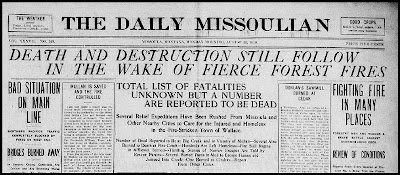Charles M. Russell (1864-1926), Montana’s famed Cowboy Artist, loved Christmas with a childlike abandon. Every year he transformed his studio into a Santa’s workshop, where he worked feverishly to fashion models out of wax, clay, and plaster as Christmas gifts for friends and loved-ones, and as fanciful table settings.
.jpg) |
|
Caravan Man, Wax, modeled
before 1900, 4¼” H x 5½” W x 2” D, Gift of
Spencer R.
McCulloch, X1954.04.02 |
 |
Best Wishes for Your Christmas, Watercolor, gouache
and ink, 1914, 12½” H x 9” W, Mackay Collection, X1952.01.25 |
In addition to these small treasures he also created delightful Christmas cards. He loved to portray magical encounters between astonished cowboys and Santa Claus on the wintry Montana plains. He also painted a number of humorous and nostalgic cowboy-themed cards such as the one shown at right.
In 1914, Russell sent this original, hand-painted greeting to kindred spirit Malcolm Mackay and his family. While the verse is the artist’s own, the calligraphy is not. Knowing that his own penmanship was somewhat lacking, Charlie relied on close friend and neighbor Josephine Trigg to do the calligraphy.
Nancy summed up her husband’s love for the Holiday when she recalled their first Christmas together in Cascade as a married couple “trotting in a double harness” when they had nothing. Nancy wrote, “We were happy over that Christmas…because the happiness came from within. Charlie was as pleased as if he had received a million dollar gift. The simple things in life always did thrill him; no one could live near him without taking on some of the child-like joy from the little things.”
.jpg) |
|
It’s No Lady’s Job, Plaster,
1926, 9” H x 9” W x 29” D, Gift of
Charles S. Jones, X1954.07.01
|
Russell’s images of Christmas continue to delight viewers to this day. His Christmas greetings are enjoyed by many and remain a popular commodity in our Museum Store. We at the Society join with Charlie Russell in saying to you and yours “Best Wishes for Your Christmas!"
The Mackay Gallery of Russell Art is a 2,000 square foot exhibit featuring approximately 80 art pieces, including major oils, watercolors, pen and inks, pencil sketches, bronzes, sculptures, and illustrated letters. To learn more, download the Family Guide to the Mackay Gallery (PDF). Join us on March 19, 2014 for a celebration of Charlie Russell’s 150th Birthday. And watch for our full-color catalog, Montana's Charlie Russell: Art in the Collection of the Montana Historical Society, to be published in Fall 2014.























.jpg)

+Metcalf+and+Montana+Senators+at+Russell+Statue+Parade+March+17+1959.jpg)








